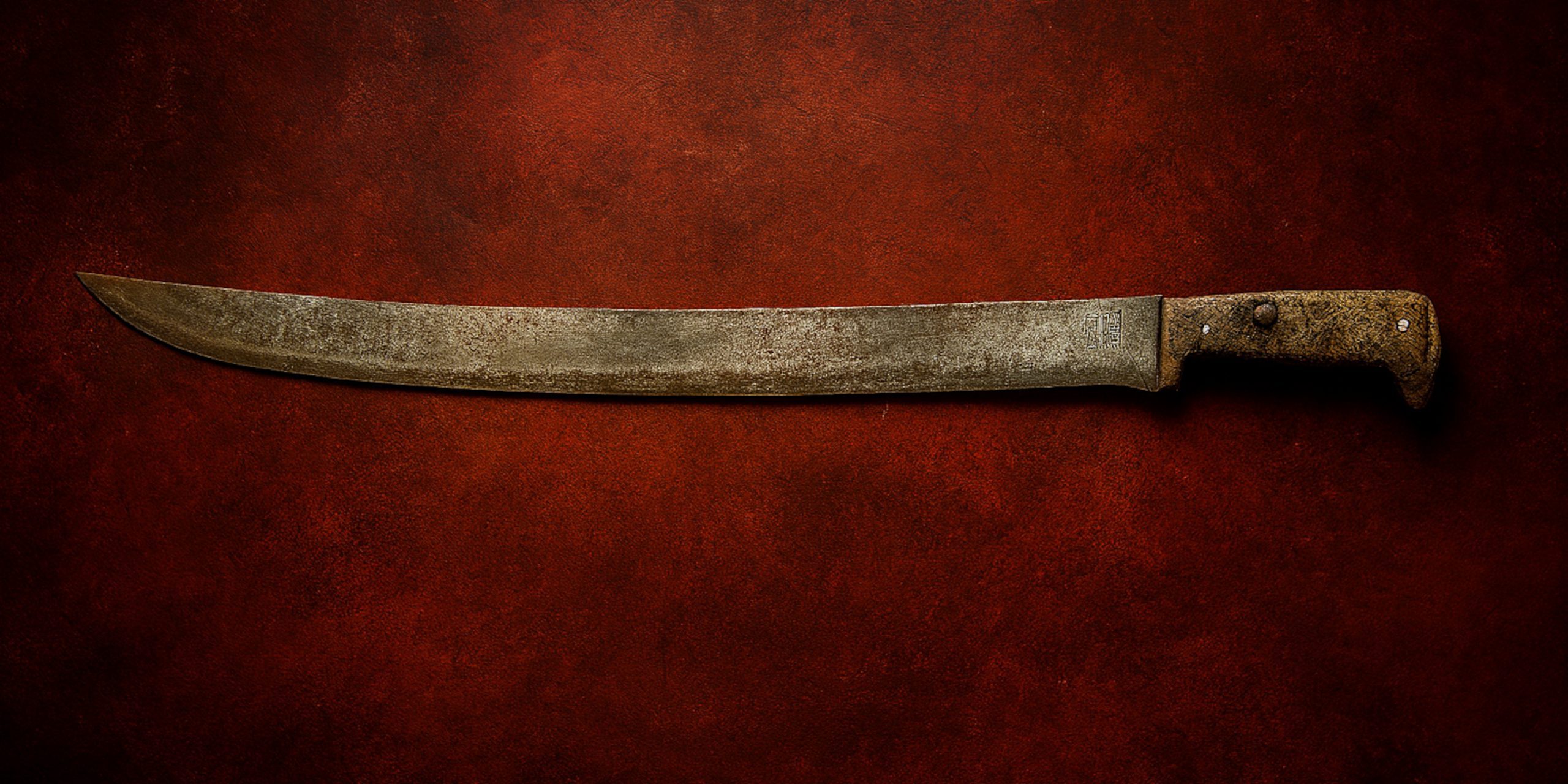
The Sardinian leppa is a traditional blade from the Italian island of Sardinia, historically used both as a practical tool and as a weapon. Rooted in rural and pastoral culture, the leppa served shepherds, farmers, and travellers for everyday cutting tasks but could also be pressed into defensive or offensive use. It carries both ethnographic and martial value, with a design adapted to the rugged landscapes and customs of Sardinia.
Specifications
| Feature | Detail |
|---|---|
| Blade length | Typically 20 to 30 cm |
| Blade type | Single-edged, slightly curved, broad |
| Blade material | Carbon steel |
| Handle material | Wood, horn, or bone |
| Tang type | Full tang in traditional models |
| Sheath | Leather or simple wooden scabbard |
| Weight | Approximately 300–500 g |
| Balance | Forward-weighted for cutting power |
History and Evolution
The leppa traces its origins to rural Sardinia in the 18th and 19th centuries. While there were earlier Sardinian cutting tools, the leppa’s recognisable form developed during a period of relative isolation when local blacksmiths produced blades tailored to regional needs.
Initially conceived as an agricultural knife for cutting vegetation, slaughtering animals, and general farm work, the leppa also became a weapon in times of personal or clan conflict. Sardinian society in the 19th century was marked by vendettas and disputes, and weapons that could double as tools were common. Over time, the leppa evolved stylistically, with some featuring ornate handles and decorative sheaths that marked them as status items. By the early 20th century, mass production began to replace entirely handmade models, but artisanal forges still produce high-quality examples for collectors and cultural preservation.
Advantages and Disadvantages
Advantages
- Versatile design suited to both utility work and combat
- Strong cutting ability due to forward-weighted blade
- Relatively compact for ease of carrying
- Durable construction, often with full tang for strength
Disadvantages
- Limited thrusting capability compared to double-edged weapons
- Short reach compared to longer swords or sabres
- Requires regular maintenance to prevent rust due to carbon steel blade
- Heavier than some folding knives, making it less convenient for everyday carry in modern use
Comparison with Similar Weapons
| Weapon | Origin | Similarities | Differences |
|---|---|---|---|
| Sardinian Leppa | Sardinia, Italy | Single-edged, utility and combat use | Broader blade, more pronounced curve |
| Corsican Vendetta Knife | Corsica, France | Regional identity, rural tool | Slimmer blade, often folding |
| Italian Mannaia | Italy | Rural utility blade | Generally larger, cleaver-like |
| Nepalese Kukri | Nepal | Forward-weighted blade, dual-purpose | More exaggerated curve, longer cutting edge |
Legacy
The leppa remains a symbol of Sardinian heritage, tied to the island’s pastoral and agricultural history. It is still produced by traditional smiths, often as ceremonial or decorative items rather than for practical use. The knife is displayed in regional museums and celebrated in local crafts markets, maintaining its cultural presence even as its role in daily life has diminished.
Where to See
- Museo Etnografico Sardo (Nuoro, Sardinia) – Displays traditional leppas alongside other Sardinian tools and weapons.
- Museo Archeologico Nazionale di Cagliari – Features ethnographic collections including historical blades.
- Local craft fairs in Sardinia – Artisans often showcase traditional and modern leppas.
Collectors Guide Including Auction Prices
Collecting Tips
- Seek examples with original sheaths and minimal restoration for historical authenticity.
- Provenance is important; blades with verifiable regional origin fetch higher prices.
- Hand-forged, pre-20th-century leppas are rare and command premium value.
Typical Auction Price Ranges
| Condition | Period | Price Range |
|---|---|---|
| Excellent, with original sheath | Late 19th century | £350–£600 |
| Good, minor wear | Early 20th century | £200–£350 |
| Modern artisanal reproduction | Contemporary | £80–£200 |
| Decorative tourist model | Mid to late 20th century | £40–£100 |



